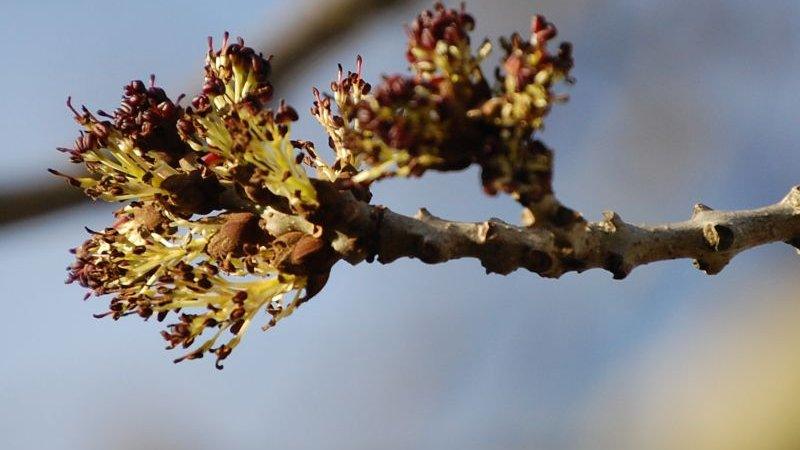Ash dieback: How a tree disease and war in Ukraine are hitting hurl makers
- Published
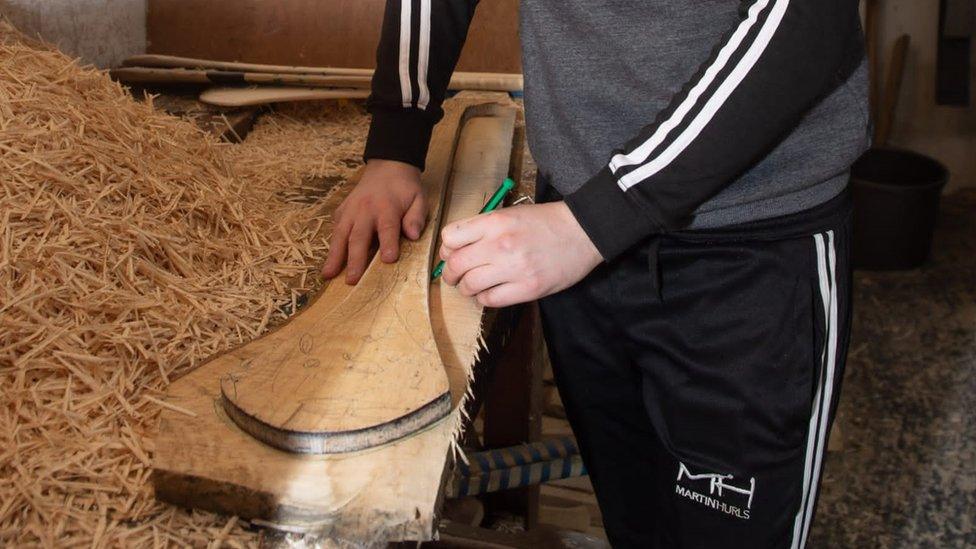
"Traditionalist" hurl makers are keen to use Irish ash, but many are struggling to get their hands on it
Hurling is a sport that has ancient Irish origins.
Fast and often furious, it has been called the "clash of the ash" because the hurls or hurley sticks are made from the bottom 1.3m of the native Irish tree.
But the last few years have seen ash come under attack from a disease called dieback.
Just as Dutch elm disease all but eliminated elm trees in Ireland, there are similar fears about what dieback and its discolouration may do to the ash species.
In the sport's stronghold of Kilkenny, one hurl manufacturer is worried about the longer-term implications.
David Dowling, the owner of Star Hurleys, says the supply in Ireland and England should be enough to keep his company going for the next few years but "after that it's hard to know".
"We haven't really looked into the European market yet, but I know a lot of other hurley manufacturers have. So, that's something that we'll probably look at in the next year or two."
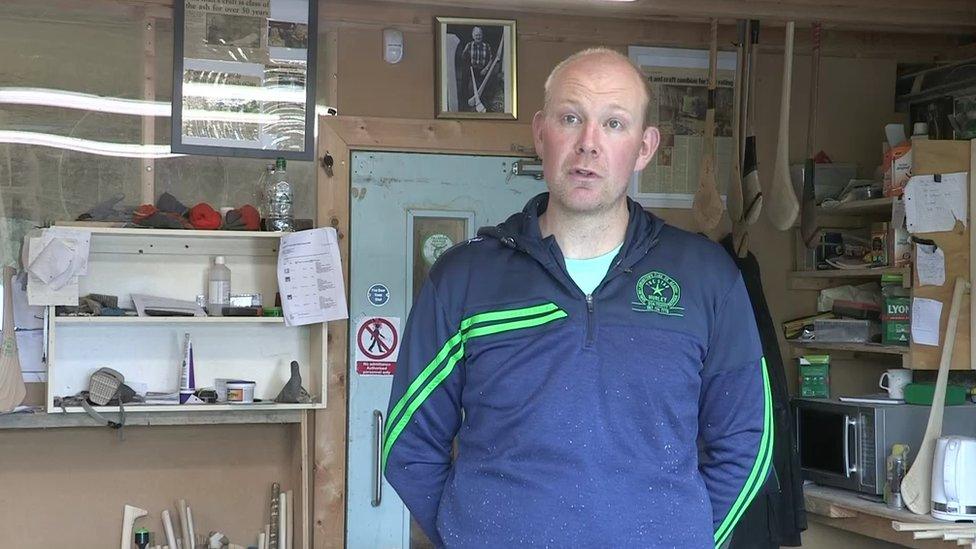
Star Hurleys owner David Dowling is worried about the long-term implications of ash dieback
Star Hurleys, a third generation family company, employs six people and makes about 20,000 hurls a year.
The ash wood is dried for two weeks, then cut and shaped into different sizes for bespoke hurls for, amongst others, All-Ireland winning players.
Ukraine war hits supplies
It's a process Emmett Martin fell in love with 10 years ago, when he began making hurling sticks at the age of 15.
He works full-time producing hurls from a workshop at his family's County Antrim home, but he has felt the impact of ash dieback.
He had been aware of it for years, but in March, after Russia invaded Ukraine, the shortage really hit business.
"The climate in Ukraine would be consistent with Ireland and bigger hurling manufacturers would have got ash supplies from there," Mr Martin says.
"When the war happened, those manufacturers turned back to Ireland.
"There's a very small pot of Irish ash, so when they turned to that, it left those of us further down the food chain struggling to get any crumbs."
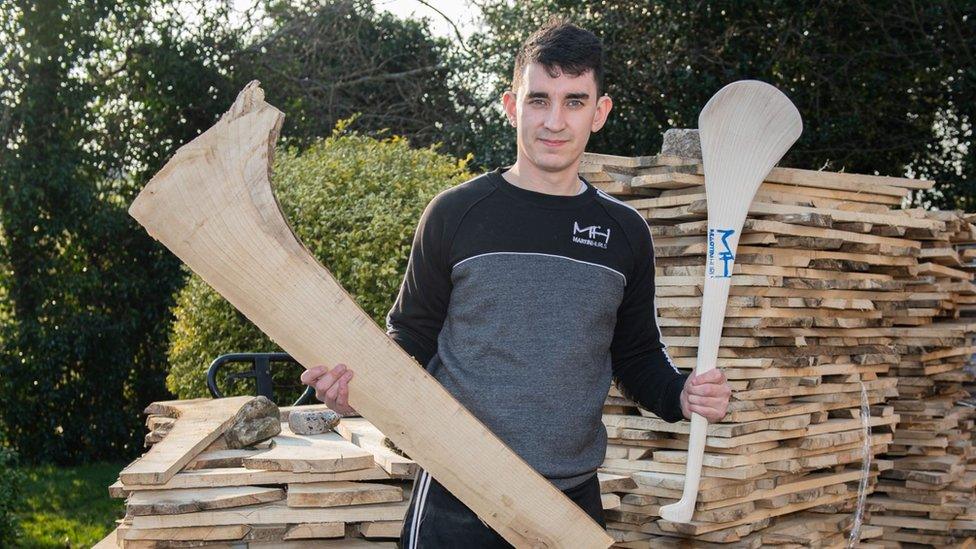
Emmett Martin made his first hurl when he was 15
He wanted to look after his local customers, so had to halt sales to Australia and the US.
"When you do get the phone call from an ash supplier that they have some, it has almost doubled in price.
"I have a good rapport with my customers so it's hard to put prices up, but something's got to give," he explains.
'Bony fingers'
While Mr Martin describes himself as a traditionalist, there are others who have been seeking an alternative for years.
In the 1970s, art teacher and hurling enthusiast Kevin Reynolds began wondering if he could apply his work with synthetic resins to making a hurl.
"My father made the first composite hurl in 1976 and it was the holy grail for him for most of his life," his son Barry says.
"In 2012, when ash dieback really started rearing its ugly head, he convinced me to come on board: 'The game needs it,' he said to me."
Barry Reynolds has watched the ash around him succumb to dieback rapidly.
The disease is caused by a fungus called Hymenoscyphus fraxineus., external and has spread through the Republic of Ireland and the UK since it arrived.
It's estimated it could claim 90% of the islands' ash trees.
"If you look at the top of an ash tree and see a branch with no leaves, like bony fingers sticking out of them, that's ash dieback," Mr Reynolds said.
"Five years ago, everywhere I went, I'd look for signs of ash dieback and couldn't see it.
"Now I can't see a tree without it," he says.
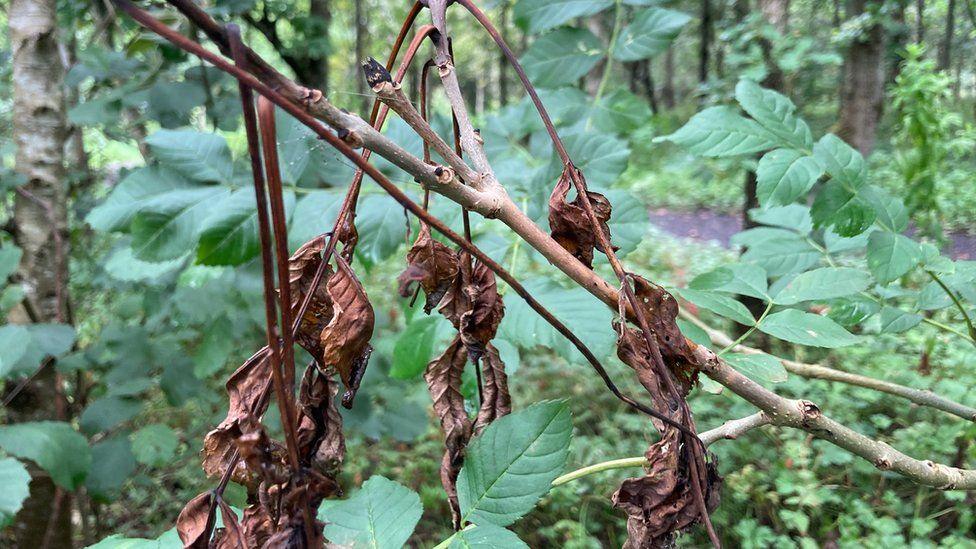
Ash trees are by far the most abundant species in Ireland and it's estimated dieback could claim 90% of them
Mr Reynolds worked with researchers at Queen's University Belfast's Polymer Processing Research Centre.
He teamed up with local hurlers and some of the game's top players - Neil McManus from Antrim, Kilkenny's Richie Hogan and Tipperary's Seamus Callanan.
They would test out different versions.
Finally, the Reynolds found the formula they were looking for, the hurling stars gave their approval and the Reynolds hurling stick was born.
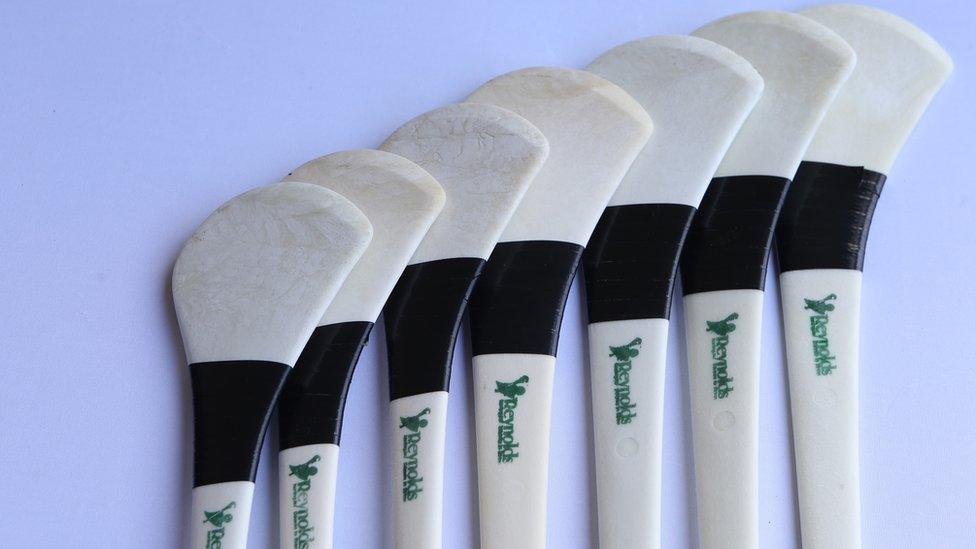
Reynolds hurling stick was launched with the help of inter-county players Neil McManus, Richie Hogan and Seamus Callanan
He says as well as buyers like Croke Park, smaller companies, which cannot get enough ash, are turning to the product.
"They are looking to sell ours in addition to theirs. They can shave ours and personalise them, so it enables them to stay in business."
Reynolds isn't the only company looking at alternative materials, with bamboo hurls and fibreglass hurls also in the mix.
Despite the growth in his business, Mr Reynolds says he wants ash to remain an integral part of hurling.
"It's an important part of this historical game," he says.
He is hopeful that work being done to breed resistant trees, can save the Irish ash in years to come.
'Like milk and bread'
Emmett Martin is hopeful too. More ash has become available from England and Wales, which has eased supply troubles for now.
He has parents coming in to buy their child's first hurl. They'll be back to buy the next sizes up, "like milk and bread, essentials that you don't just buy as a once off purchase".
Just as he hopes to watch those young people grow to play senior hurling, the dream would be to have their hurls made from Irish ash.
"That'll be hard - but I'm up for the challenge," he said.
Related topics
- Published31 March 2022
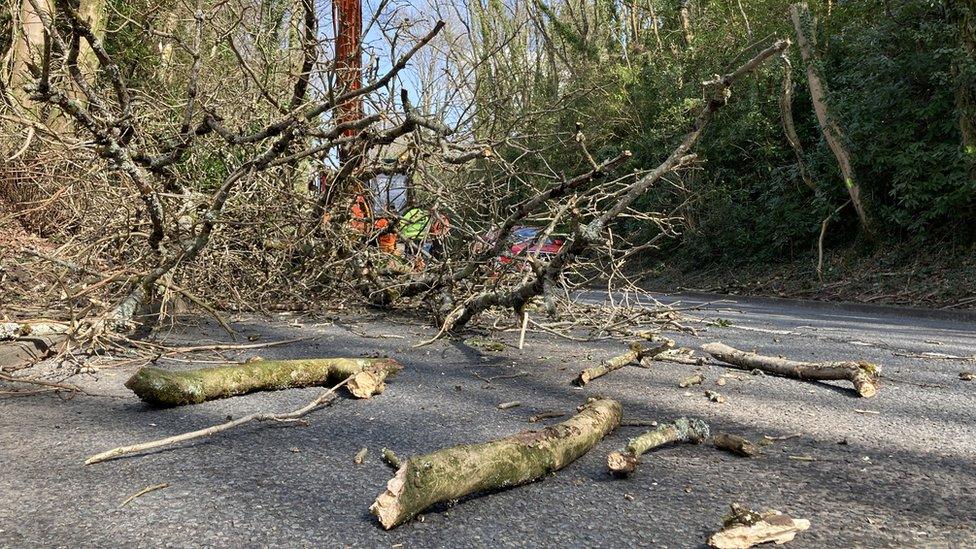
- Published20 August 2020
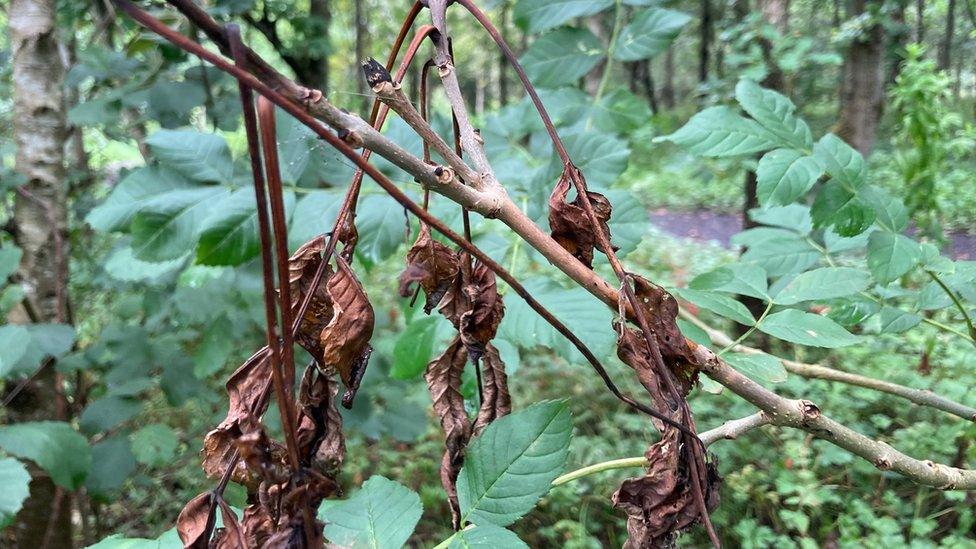
- Published8 May 2020
